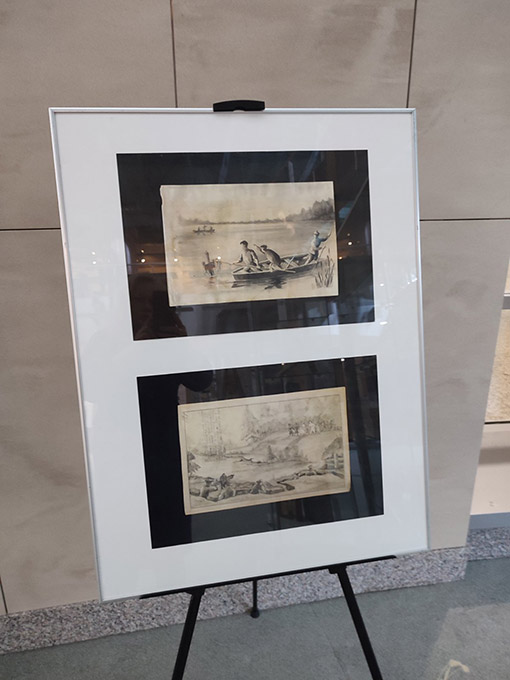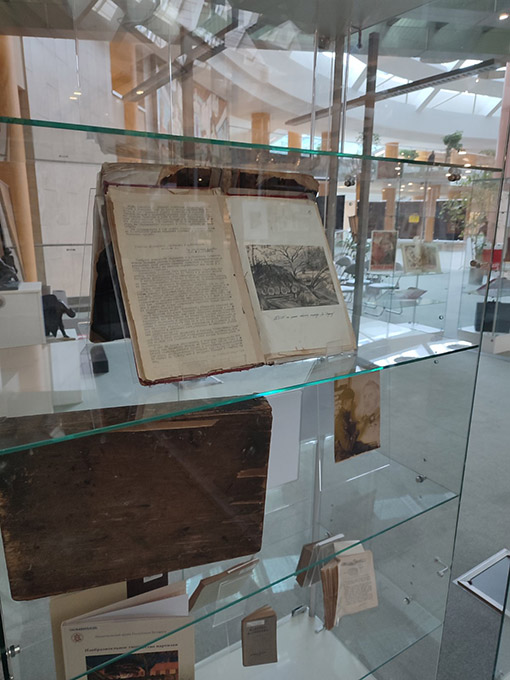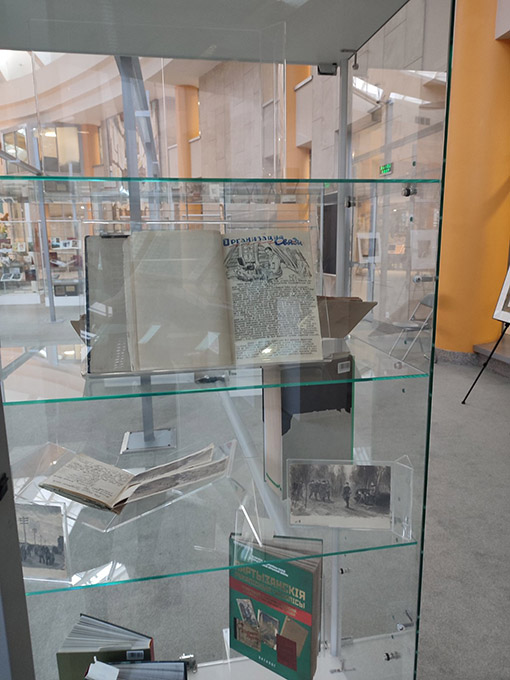Exchange of experience between representatives of the National Archive and colleagues from the Central Archive of the Ministry of Defense of the Republic of Belarus
On February 8, 2024, as part of the annual exhibition project «History and Modernity of Book Graphics», the National Archives of the Republic of Belarus together with the National Library of Belarus, the Belarusian Union of Artists, and the Belarusian State Museum of the History of the Great Patriotic War opened the exhibition «Mova of Military Graphics». The theme of the 2024 exhibition is dedicated to the 80th anniversary of the liberation of Belarus from the Nazi invaders.
The emphasis in the exhibition is on the creative rethinking of the tragic events of those years by eyewitnesses and descendants, the powerful ideological and historical role of partisan illustration, propaganda and anti-fascist satirical graphics. Art materials, catalogues, illustrated books, archival documents, museum objects, original graphics and sculpture are presented.
During the difficult years of occupation, propaganda posters were widely distributed. He formed hatred towards the worst enemy and supported faith in victory. Bright propaganda posters mobilized the military and civilians to fight a common misfortune; national goals dominated over individual ones, but often the poster addressed personal pain, loss, or, at the end of the war, joy. The satirical poster is presented at the exhibition with originals and reproductions of the publications «Let’s crush the fascist gadzina», «Partisan baton», «Front-line TASS window» (1942-1944) – caustic caricatures that are rich in evil, derogatory humor for the enemy with poetry and prose of Belarusian authors, they helped cope with difficult times and reduce people’s fear, anxiety and terror through laughter.
Partisan illustration is considered a bright page in book and graphic art during the war. The National Archives presented at the exhibition original handwritten journals of partisan brigades and detachments, combat leaflets, maps of military operations, drawings in various techniques (graphic, watercolor), illustrations to the stories of partisan brigades. Having no special art education, paints or brushes, using mainly a pencil, in a dugout or hut, they gave us on paper a chronicle of partisan everyday life.
Front-line portraits, views of destroyed settlements, sketches of military operations and everyday life are of undoubted value as signs of the times, documents of history that convey to us the objective truth of the war.
Pocket-sized books in soft cover, printed on plain paper, which were convenient to hide in a field bag, soldier’s backpack or tunic pocket. Today these books are a bibliographic rarity. You can also trace the peculiarity of the design of books for the front and the greatness of Belarusian and Soviet military poetry and prose of the post-war period in book graphics. The combination of what was seen, experienced and heard was embodied by creative unions of writers and illustrators: V. Bykov and Y. Poplavsky, A. Belevich and V. Sharangovich, I. Shamyakin and A. Kashkurevich, B. Polevoy and M. Zhukov, etc.
Works on military subjects made by Belarusian authors and inspired by the feat of the Belarusian people by G. Poplavsky, I. Kashkurevich, V. Savich, V. Providokhin, Y. Zaitsev, A. Kashkurevich, L. Ossetsky, I. Artimovich, A. Shappo, S. Logvin , S. Gumilyovsky allow you to see the pages of the history of the Belarusian liberation from the Nazi invaders with your own eyes.
Artists, musicians, sculptors, and writers went through the war with a sense of personal responsibility for the fate of their Motherland. What they created mobilized the spiritual forces of society, became a powerful weapon and an effective propaganda tool in the great battle against fascism, caused a surge of spiritual and physical strength among the people, turned into the meaning and content of life, the need to survive and win. This responsibility was transferred to the next generations of creative personalities, who, along with the current and eternal search for meaning, invariably returned to preserving the memory of the greatest tragedy of the twentieth century.







